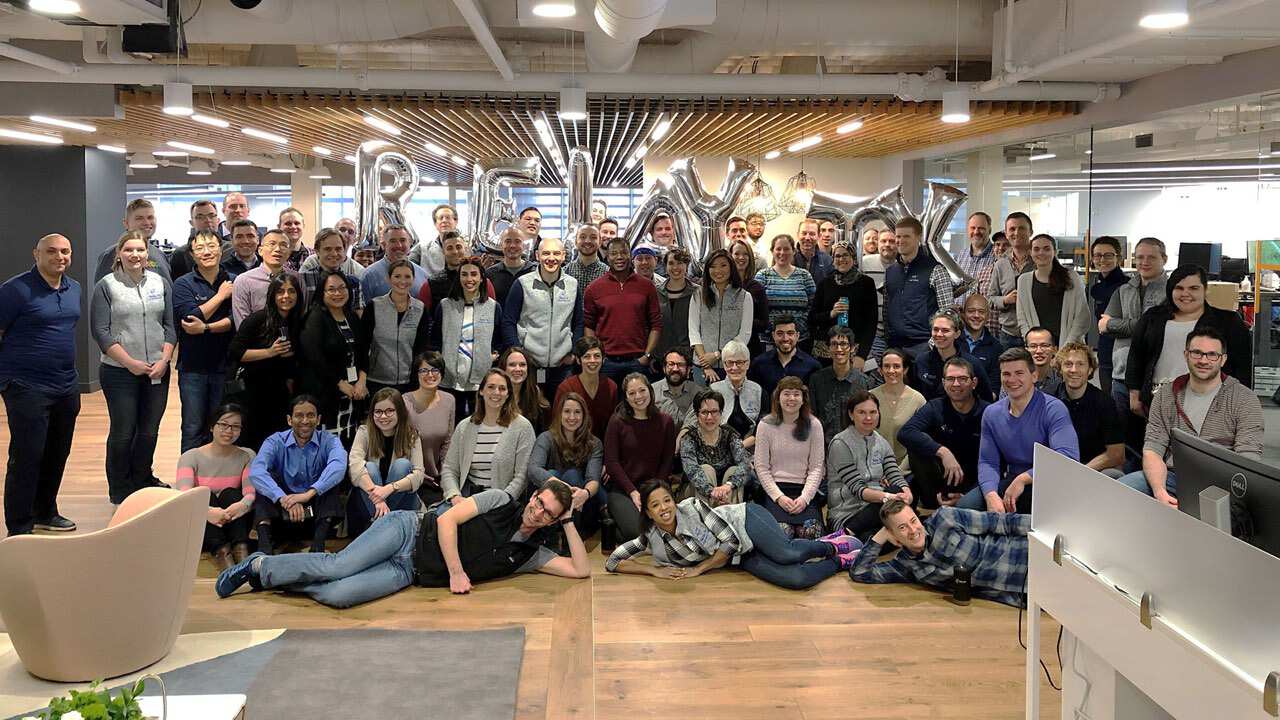In 1915, X-ray crystallography was the basis for that year’s Nobel Prize in Physics. From the 1990s, this process has been used in the pharmaceutical industry to create static snapshots of proteins, and is still used in drug discovery today. One hundred years after that Nobel Prize was awarded, an eclectic symphony of computational biologists, scientists, and drug development experts came together to explore a different kind of drug discovery process that isn’t based on static protein snapshots — it’s based on the movement of proteins. This group co-founded Relay Therapeutics, and they are determined to transform drug development.
 The Relay Therapeutics Team
The Relay Therapeutics Team
Relay’s technology can visualize and target moving proteins in the human body. By identifying and simulating the underlying proteins that cause disease, Relay can design better drugs to treat cancer and other devastating genetic diseases. Replicating the motion of a small molecule — something typically the size of one-billionth of a meter — takes an astronomical amount of computing power. Relay addresses this complex computational task through advanced machine learning. It marries that with biotechnology and precision medicine, which has led the company to make significant advances in developing cancer drugs to date.
Being able to better understand, treat, and prevent cancer is one of the most important healthcare missions today. There are an estimated 18 million cancer cases around the world — and that number is growing. Every case can have devastating effects on patients, families and communities. From my perspective as a physician and a computer scientist, Relay’s approach to drug discovery signifies the best computational and medical advancements of the past century. I jumped to invest in the company in 2017 and doubled down on our investment again in 2018.
From my perspective as a physician and a computer scientist, Relay’s approach to drug discovery signifies the best computational and medical advancements of the past century.
Having spent a few years as a board observer, I’m often asked what it’s like to work with CEO Sanjiv Patel and the rest of the team. In 2016, I headed to an unassuming office in Cambridge to meet Sanjiv and half a dozen team members for the first time. I was floored by the caliber of the people sitting around that conference room table: computational chemists, biochemists, and scientific and pharmaceutical experts, who were in the middle of a lively and spirited debate on protein motion. Their dynamic made it clear that this is a group of people who can culturally integrate across very different domains — something that is much easier to do in theory than in practice. Sanjiv, an organized and energetic leader, laid out the vision for the company. “So how big is the team now?” I asked, assuming they must have dozens of people working on tackling such a big problem. Sanjiv and the others looked around the table and laughed. “This is the team!” While they have since grown into a formidable company, I’m still impressed with what they were able to accomplish as a small and nimble team in those early days.
Today on behalf of GV and our life sciences team, I want to congratulate CEO Sanjiv Patel, co-founders David E. Shaw, Matthew Jacobson, Dorothee Kern, and Mark Murcko, and the entire Relay Therapeutics team on their IPO. It took a century for the drug discovery relay to get this far, and it’s fitting that we pause to appreciate that for a moment. But before we know it, the Relay team will be off to the races again.